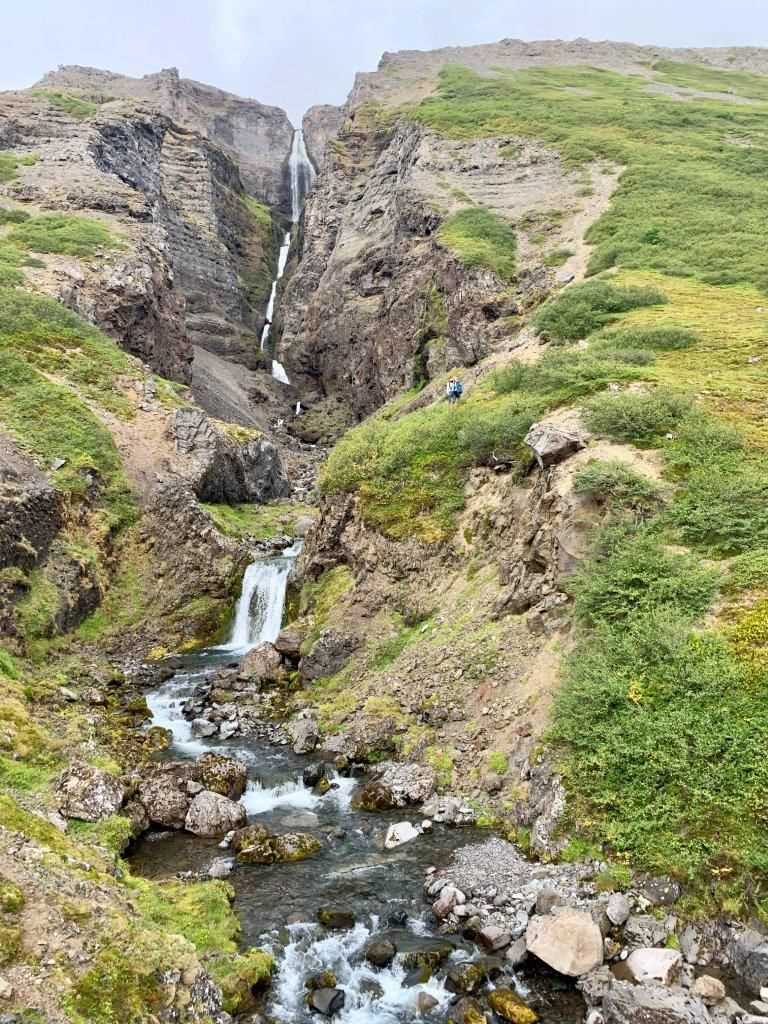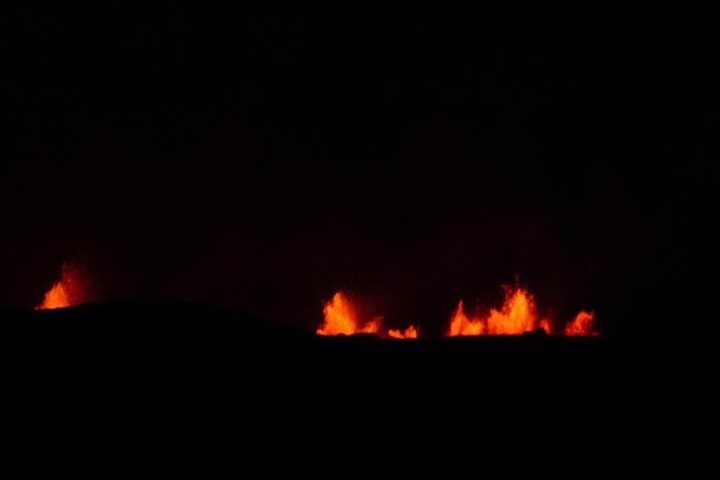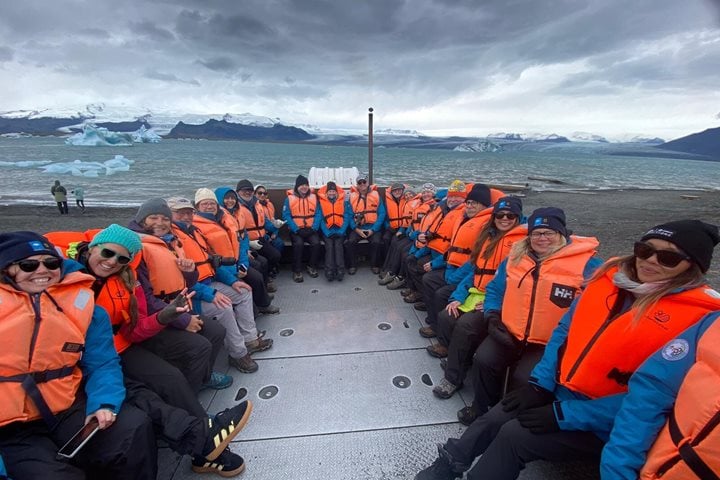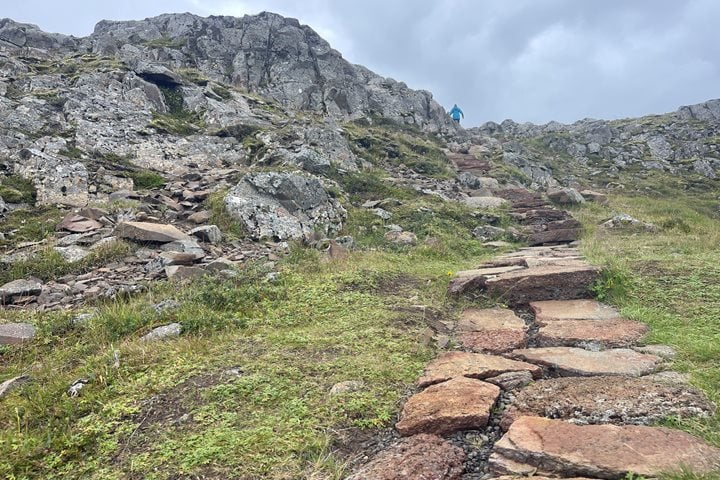Our day started in Isafjordur, a deep Icelandic fjord just south of the Arctic Circle. In winter, there are quite a few days without sunlight and snow covers the fjord for a long time. But lucky for us, it was summertime!
We jumped into the bus, ready for the Valagil hike that awaited us. We walked through the valley until suddenly, a hidden waterfall was revealed. The day was sunny, with no wind, and meadow pipits and redwings were flying around. The redwings must have had chicks at this time, as the adults were flying around with bugs in their beaks. Summer is short in Iceland, so the chicks must fledge sooner rather than later!
On our way back we saw some iridescent puddles. Our botanist Dennis Cornejo explained that the water of this valley is rich in iron, and that some bacteria thrive on the oxidizing iron present in the water. When bacteria accumulate on the surface of the water, the membrane shines with several colors, giving the appearance of gasoline along the river surface. This typically happens in bogs and marshes. After observing the phenomenon for a while, we continued our journey—looking for arctic foxes!
We visited the arctic fox center to learn about this charismatic species as well as enjoy the presence of the newest resident of the museum—a six-week-old arctic fox pup. He was found by some hikers and brought to the center. There’s a chance, though small, that one day, the pup can be rehabilitated and released into the wild.
The afternoon was spent on small Vigur Island. Many eiders nest here during the summer and their feathers are collected by the islanders and turned into fancy down products—very useful in the Icelandic cold winters. One of the highlights of our visit was observing the Tafoni or honeycomb weathering. It typically happens close to sea level, when salt crystals are formed and dissolved, weathering the rock forming this beautiful formation. We learned so much from our geologist Mike Jackson! In the warm light of the sunset, we headed back to the ship.







